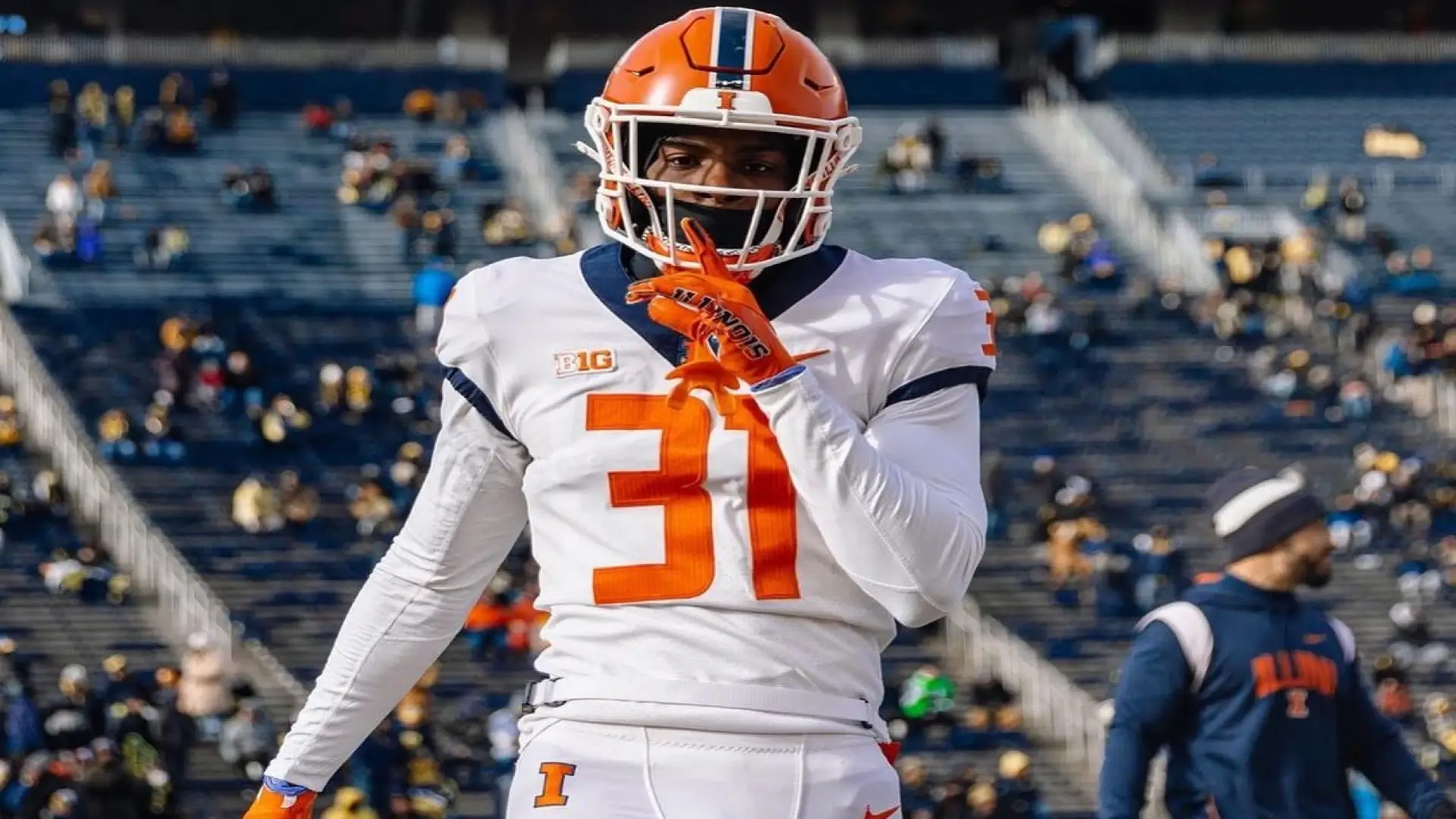During an American Football game, the offensive backfield has eleven men. One of those eleven players is referred to as a running back.
Here’s a rundown of what a running back does in a game, the many types of running backs, and some of the best players.
What Is the Role of a Running Back?
During a game, a college football or NFL running back has various responsibilities. Their duties include the following:
1. Keeping the ball in play.
2. On blitz plays, blocking linebackers and other defensive men.
3. Passes are becoming available.
4. Using a play-action attempt to serve as a decoy.
5. On special teams, be a punt/kick returner
A running back must also have exceptional hand-eye coordination to make catches, great speed to avoid tackles, and a general understanding of defensive formations to find opportunities during a running play.
What is the Meaning of the Term “Running Back”?
The moniker “running back” comes from the primary job of the ball carrier in American football. During a handoff, the running back should sprint up the field and gain as many yards as possible.
While a running back can block, receive passes, and run with the ball on occasion, their primary function is to run with the ball.
What is the Significance of Running Plays in Football?
For a variety of reasons, running plays are crucial to every football team. On offense, rushing the ball can gain significant yards. When a team is only a yard or two from the endzone, they may choose to run for a touchdown.
Teams will choose to run more frequently since throwing the ball a yard or two away from the goal line could result in an interception.
Another advantage of running is that it keeps the defenders at bay. If you have a terrific quarterback who throws for a lot of yards per game, for example, the defense will line up to defend against pass plays more frequently.
If a team can incorporate the run game into their offense, the defense may be forced to begin defending against the run, putting passing plays at a disadvantage. Third, depending on the weather, running the ball may be a better option.
A snowy and windy game in Green Bay, for example, may make it difficult for a quarterback to throw down the field for a first down. If the weather makes these passes difficult, the running game will have to win in a big way.
Running Backs Drawbacks:
If a running back is hit hard by a defensive player, they may fumble the ball. A running back’s other disadvantage is that they are not as strong as other players, so they may struggle to block defenders during a blitz.
Finally, certain running backs are below average at catching passes, resulting in more dropped passes than wide receivers.
Can Running Backs play other Positions?
Because running backs are among the fastest players on the field, they may be used on special teams. Hence, they can play a few other positions. A running back will typically be the punt returner or kick returner for a team.
NFL clubs may put them in that position since they have exceptional catching abilities and can secure the kick and run with the ball.
What is the difference between a Running Back and a Fullback?
On most plays, an offensive line will have one or two running backs. Behind the offensive line, the running back, often known as a halfback or tailback, lines up.
Their primary function is to run with the ball, but they can also serve as a defender or wide receiver on occasion. A fullback, on the other hand, is a runner as well, but their major responsibility is to block a defensive player in order to protect the quarterback.
If a team wants to run with the fullback position, they usually do it when they only need a yard or two of offense to get a first down or score.
When comparing the two football positions, fullbacks are larger and stronger than halfbacks, which is why they block more often than they run.
A halfback’s quickness, on the other hand, means more running attempts during a game. While both a fullback and a running back are rushers, one is more suited for short yardage gains and the other for long gains.
Who in the NFL has the most rushing yards as a running back?
With 18,355 rushing yards in his career, Emmitt Smith holds the record for most rushing yards. Emmitt was a juggernaut with 4.2 yards per run over his 15-year career, which he spent mostly with the Dallas Cowboys.
Furthermore, Emmitt only fumbled 38 times out of 4,409 tries, accounting for less than 1% of the time.
Walter Payton has 16,726 rushing yards, which is second only to Emmitt Smith. With 16,000 yards, Frank Gore is in the third position.
A Running Back’s Size and Shape:
A halfback’s size is one distinguishing feature. A tight end, for example, will be roughly 6’2′′, give or take, whereas a halfback will be smaller. According to operations.nfl.com, running backs are typically under 6 feet tall and weigh around 215 pounds.
Jerome Bettis, for example, was under 6 feet tall yet weighed over 250 pounds. Bettis, for example, was renowned as a power back because he was so difficult to tackle.
Trindon Holliday, on the other hand, is the NFL’s shortest running back. In his four-year career, he only had one rushing attempt for seven yards, standing at 5 feet 5 inches and 165 pounds.
What running backs are in the Hall of Fame of the National Football League?
Running backs are represented in the NFL Hall of Fame by twenty-eight players. Jim Brown, O.J. Simpson, Barry Sanders, Marshall Faulk, Emmitt Smith, and Walter Payton are among the most well-known players.
EndNote: What is a running back in football?
In conclusion, the value of a running back on a football team cannot be overstated. A running back, like a tight end, must wear several caps during a game.
While they typically run with the ball, they are occasionally called upon to serve as an extra blocker or even a pass target for the quarterback.
Not only that but because of their speed, certain running backs are also used on special teams, demonstrating their versatility as a position.
More Interesting Football Facts:
1. What is a Quarterback in Football?
2. What is a Wide Receiver in Football?
3. What is an Interception in Football?
4. What is a Long Snapper in Football





